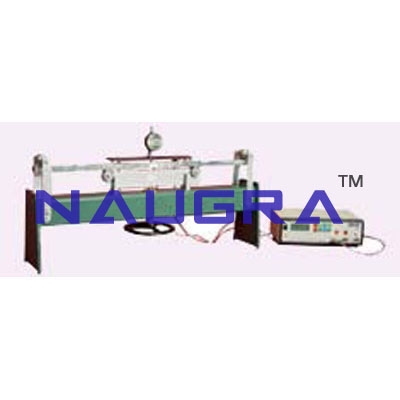- Civil Lab Mechanical Lab Engineering Lab Equipments
- sales@didacticlabequipments.com

CAT NO: DIDACTICNLE-Export-053016
Calibration Of Electrical Resistance Strain Gauges- Engineering Lab Training Systems.
Features
Cost, effective
Self-contained
Calibration of strain gauges to
Determination of gauge factor
Introduction to calibration and standards
Introduction to probability of production
errors of batch made strain gauges
Three year warranty
Range of Experiments
To study the application of structural theory in strain gauge calibration
To asses the accuracy of calibration techniques
To introduce the application of probability theory in production quality control
Description
Based
on BSI Draft for development 6:1972 this gauge factor test rig is a
precision item specially designed for measuring the gauge factor of an
electrical resistance strain gauge. It also demonstrates how structural
theory is used to determine the strain on the surface of a test bar for
calibration purposes.
The apparatus is based on a four point
loading system which produces circular bending in the center section of a
precision ground steel beam. A device for measuring the curvature over a
length of 300mm has been calibrated to give direct readings of strain
up to 1000 micro stain.
For demonstration purposes a pair of
electrical resistance gauges have been bonded to the beam, but for
calibration work users will bond their own gauges in accordance with
DD6/1972.
An extension from the normal technical experiment is to
introduce students to probability theory to assess likely differences
in gauge factor due to batch manufacture.
This equipment is part
of a range designed to both demonstrate and experimentally confirm basic
engineering principles. Great care has been given to each item so as to
provide wide experimental scope without unduly complicating or
compromising the design. Each piece of apparatus is self-contained and
compact. Setting up time is minimal, and all measurements are made with
the simplest possible instrumentation, so that the student involvement
is purely with the engineering principles being taught. A complete
instruction manual is provided describing the apparatus, its
application, experimental procedure and typical test results.
